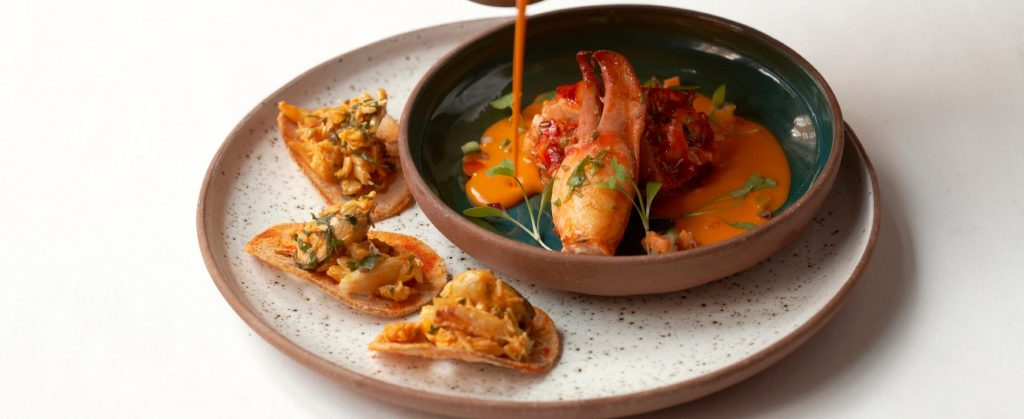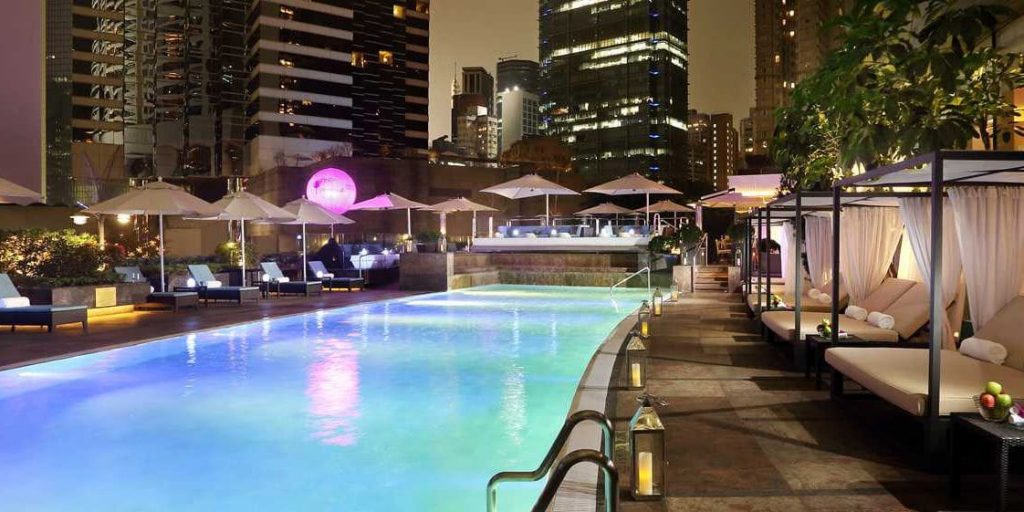To celebrate the upcoming 2019/2020 oyster season, The Sybarite was invited to attend an Oyster Masterclass at the legendary London restaurant, Wiltons. There is truly no better place to learn about the art of oysters—from differentiating between native and rock oysters to seeing shucking techniques first-hand, and understanding how to get the best flavour out of each mollusc—than at an establishment which holds six royal warrants for supplying oysters to the royal household.
I joined the five other members of our intimate group at the Oyster Bar at Wiltons. We were introduced to our teacher, oyster master Tommaso Sicurro, and were given a welcome glass of Wiltons’ 275th Anniversary Special Cuvee NV. Tommaso began the class by sharing some details on Wiltons’ storied history dating back to 1742. He then told us about how oysters are born male but become female when they reproduce. He brought out a native oyster and a rock oyster and showed us the difference between the round native oyster which tastes better when the sea is colder, and the teardrop-shaped rock oyster that is eaten year-round. We were then taught the best way to consume an oyster: first by smelling the oyster, then by taking a sip of the liquor, and finally, taking the whole oyster in your mouth and making sure to chew well to release the juices and flavours that truly make each oyster unique.
We were given a list of the twelve oysters we would be tasting throughout the evening and Tommaso instructed us to write tasting notes next to each and indicate which ones were our favourites. The oysters arrived in two groups: natural and cooked/dressed. Tommaso said it was important to first understand how each oyster tastes completely au naturel. He said that many people scoff at the thought of serving oysters warm or dressing them to disguise the taste, but that Wiltons head chef Daniel Kent has made it his mission to provide options for those who prefer oysters this way and ensure that the true oyster flavour does not get lost.
For the natural oysters we tried the following:
Jersey Rock
River Yealm
Carlingford
Porthilly Rock
Loch Ryan Natives No1
Loch Ryan Natives No2
The natural oysters were paired with a 2015 Wiltons Chablis, Domaine Jean Durup from Burgundy. Tommaso went over where each oyster was from and how their locations affected their appearance and taste. My favourite from the natural oysters was the Porthilly Rock variety from Cornwall. It had a wonderful creamy taste and was deliciously plump.
Next came the cooked and dressed oysters which were paired with a 2015 Sancerre, Domaine Jean Paul Balland from the Loire Valley.
We tried the following cooked and dressed oysters:
Rockefeller
Bulllshot, consommé and horseradish
Beurre blanc, cucumber and caviar
Mignonette
Chilli, pickled red onion and chorizo
“Christian Dior”
The table was split between those of us who preferred the natural oysters and those who thought the cooked and dressed versions helped bring new flavour combinations that complemented the oysters. My personal favourites were the beurre blanc and the “Christian Dior”, a recipe that the iconic designer included in his own cookbook. With sherry, cream, truffles, egg yolk, and white wine sauce, it really is as decadent as it sounds.
Oyster Masterclasses at Wiltons last for 90 minutes for an intimate group of six participants. Starting at 6:00 pm, guests will enjoy an interactive session, a glass of Champagne, two glasses of white wine, and a dozen oysters. Bookings can be made via Georgie@wiltonsholdings.com
Wiltons
Address: 55 Jermyn St, St. James’s, London SW1Y 6LX
Phone: 020 7629 9955
Website: https://wiltons.co.uk/









